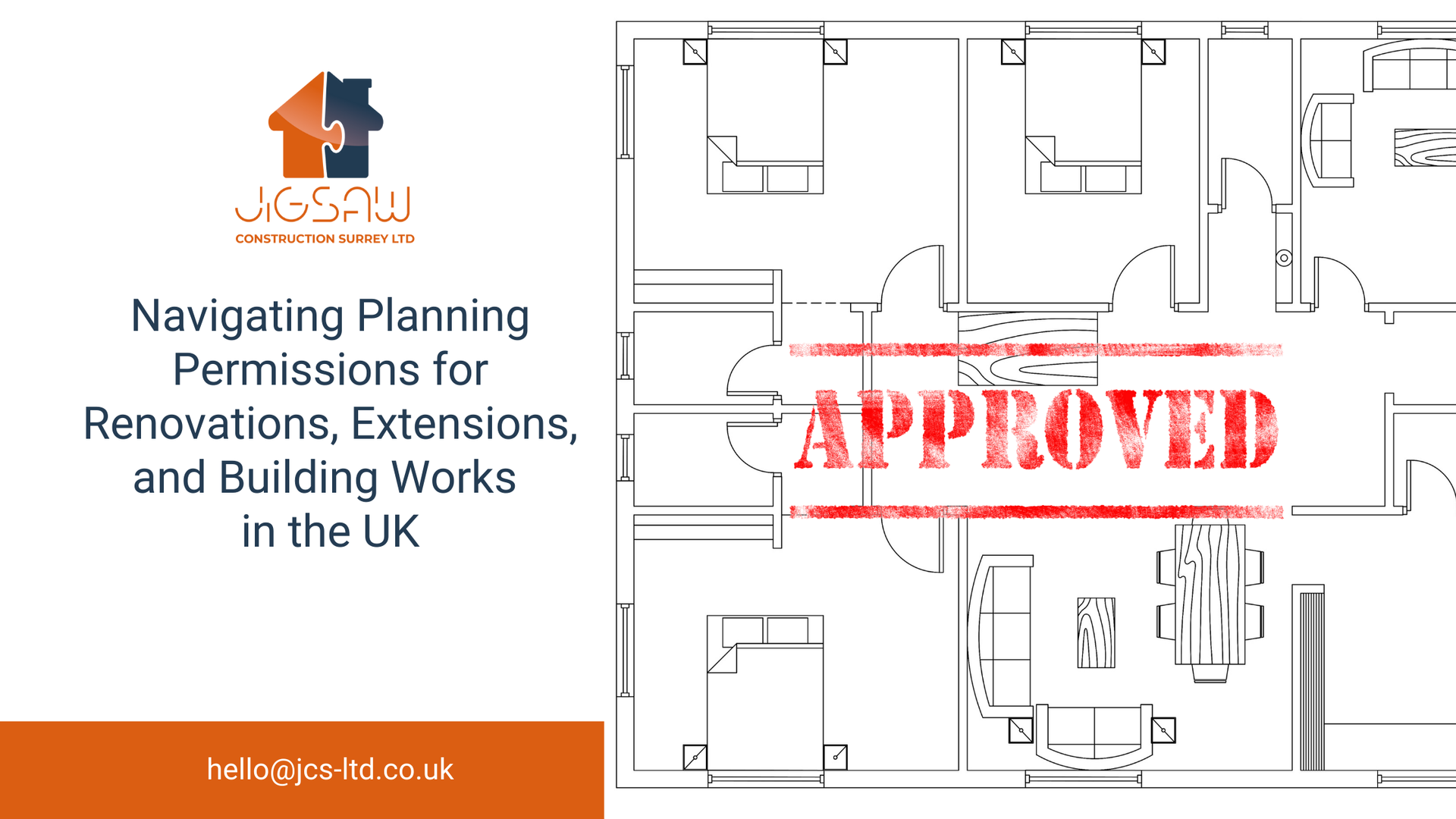
Connect with Jigsaw Construction
Reconfiguring Existing Layouts of Your Home

Sometimes a family may need additional living space but, instead of extending onto their property, they choose to use the space they already have differently. This is known as remodelling or reconfiguring.
Reconfiguring is different to renovating as a reconfiguration transforms and changes the form, purpose and/or structure of a space, while a renovation fixes or refreshes a space without changing its purpose.
Consider the floorplan of your home. Is the dining room only used occasionally as a dining area and the rest of the time it’s used as an office/ dumping area that’s cleared out for Christmas dinner? In some homes, there’s also an integral garage – invariably used for storage with the car parked on the drive. Which rooms do you use the most and why?
When considering reconfiguring a space, ask yourself:
Purpose – what are we trying to achieve?
Project scope – what’s in scope and what isn’t?
Budget – how big is your budget?
Get a set of floorplans drawn up so you can take a fresh look at the layout of your home.
Ideally this will be a full measured survey, showing exact dimensions and angles, however, as a starting point, you could draw up plans yourself on squared paper. These are adequate if you are only making minor changes.
Next, check the orientation so you can work out the passage of the sun during the day and which rooms get light when. Make a note of which side of the property is quietest and most private and mark the position of the gas and electric meters (if in the house), the soil pipes and any inspection chambers outside.
Note any changes in floor level or ceiling height.
Using your plans, you can then explore all options to create the space you need. When remodelling, respect the key relationships between spaces, such as between the kitchen and dining area. Make sure all the main rooms can be accessed directly from a centrally located hallway and landing.
Building Regulations
As the homeowner, it is up to you to contact your local building control officer before starting any work. They can explain current building regulations.
Be aware that Building Regulations will always apply to load bearing walls that provide support.
If you want to remove a load-bearing wall, then you will need a reinforced steel joint installed to support the floor above. Structural engineers can calculate the load and create diagrams. A builder will then work with a fabricator to produce a steel joist and provide delivery.
When the joist is fitted, a building inspector will complete an inspection and ensure that it complies with the diagrams. The joist would need to be plastered, painted, and boarded with fireboard.
Once all required work is completed, the inspector can give you a Building Approval Certificate. You need to make sure you keep these documents, especially if you want to sell your home in the future as your buyer’s solicitor will require a report which will include a date when walls were removed
Building regulation approval will also normally be required for work necessary to the drainage system.
If you don’t follow the above regulations and guidelines, then you will need to hire an engineer to check the work done and produce calculations. If the work is deemed unsafe, you could find yourself having to pay out for the work to be completed properly.
Ideas for Reconfiguring your home
Open Plan
This is a top home remodelling option for older homes with a floor plan segmented into many small rooms. In the past it was believed each room should have its own purpose, but this is no longer necessary nor, for many, desirable.
An open floor plan creates a spacious feel. It enhances a family’s interaction and communication and is a much better layout for entertaining. Open-concept homes take better advantage of natural lighting and offer flexibility in the way space is used.
Knocking through
To create an open floor plan, one or more walls will have to go – perhaps the walls surrounding a formal dining room or those making a kitchen feel cramped. Before removing walls, you must learn which are structural. Structural walls can be removed but will need to be replaced with expensive steelwork.
If you intend to do this it may be wise to hire an architect to determine if the wall or walls are load-bearing walls, and if so, how their loss can be compensated for with one or more beams or beam and pillar combinations.
You should not need to apply for planning permission for internal alterations including building or removing an internal wall. If you live in a listed building, however, you will need listed building consent for any significant works whether internal or external. Building Regulations will always apply to load bearing walls that provide support.
Once you have created an open plan space, you will need to reconfigure the wiring and lighting, and update the heating and controls. Treat each area as a separate room or ‘zone’ with its own focal point, access, and circulation routes, and independently switched lighting circuits, albeit controlled from grouped switch panels in key locations.
Dividing a Large Room
If you need an extra room but building an addition isn’t an option, you can divide a large room into two smaller rooms with a partition wall.
Storage
Dead spaces such as alcoves or low-ceilinged, attic edges can be great opportunities to incorporate storage. You’ll need 600mm clear depth to create hanging space for clothes, but shelves can be built in much less and are an easy project to carry out for those wanting to flex some DIY muscle!
Light
You can add an extra source of natural light to spaces with skylights or glass walls.
By using pocket doors in key areas, doors can be left open without affecting movement about the space, allowing light to be borrowed from room to room, benefitting the darker spaces with less windows.
Popular Reconfigurations
1. Kitchen/Dining areas:
Many people request remodelling a family kitchen to include an informal dining area and a separate utility room and cloakroom. Typical remodel options include combining the existing kitchen with the dining room, and perhaps the living room too.
2. Garage Conversions:
Another popular option is to convert an attached or integral garage and combine this space. If necessary, extra space can be added by extending.
3. Master Bedroom:
Creating a larger master bedroom with an en-suite bathroom and perhaps a dressing area is also popular. A typical solution is to knock a doorway into an adjacent smaller bedroom – often the box room – and to add bathroom facilities here, closing up the original doorway.
Some other ideas for extra space include:
· Conversions – Adding a loft or basement conversion will give you a whole extra room that you can use for anything you wish.
· Conservatory – Conservatories can be a cheap and quick way to gain more living space, opening up the rest of your home to more possibilities.
Cost
The fewer walls you remove, the lower the cost, so don’t make unnecessary changes. Adding new walls, to form a utility room for instance, is less expensive than removing walls.
Locating your kitchen sink and utility room to make use of existing soil pipes will be the most cost-effective option but there is usually a plumbing solution for any situation. Gas and electric meters can be relocated, but this will add £300-£400 per meter to costs.
For more information and advice on how Jigsaw Property Maintenance can project manage your reconfiguration from start to finish, get in touch , hello@jcs-ltd.co.uk
Sources:



